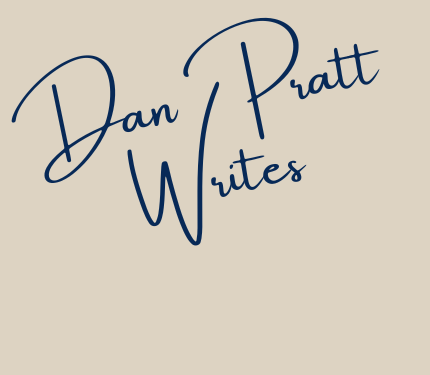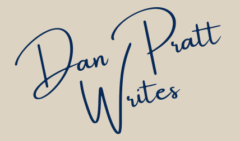7 Things To Do Before Submitting Your Story
Whether you are new to writing or you are a seasoned pro, submitting your work can be challenging. As a result, I have gathered a to-do list to cover things that even the best writers struggle with to help you get your work ready to be submitted.
Submitting your work can be challenging for a writer in a number of ways. Initially, you have the functional questions. Am I formatted correctly? Is my work meeting all the required themes, genres or assigned words? Will they be able to access my work once I have submitted it?
Then, there are the more emotional considerations. Am I ready to have my work read, and more importantly, judged? Will I be able to process and use the feedback I receive? And can I handle the rejection? These are all questions that writers need to be able to answer and get used to asking themselves if they are serious about submitting their work regularly.
With these questions and challenges in mind, I wanted to gather some advice and recommendations that I have picked up over the last year or so of submitting my own work that helped me make sure I was in the best position possible to make the most out of the opportunity.
1. Read Your Work Outloud
This is something that I actually started doing during my copywriting days. Reading your work aloud is a great way to notice spelling and grammar errors in your work that may have escaped Grammarly. In addition, it is a great way to hear any awkward-sounding parts of your writing. This is especially useful for dialogue.
Things to look out for are unnatural-sounding sentences. This can be caused by repeating similar words. An example from an episode of Star Trek that comes to mind was; “We can use shuttlecraft to ship them to the ship”. I imagine while writing the script it wasn’t noticed, but the actor reading it out made it clear that a different word should have been used.
2. Check For Overused Words
Speaking of repetition, one of the big things that can hold your writing back is using the same word over and over again throughout your story. There are two things to look out for here. The first is common words, such as ‘then’, ‘just’, ‘very’, ‘that’, which crop up again and again. There is a great quote from Mark Twain regarding the use of very which helps here. “substitute ‘damn’ every time you’re inclined to write ‘very;’ your editor will delete it and the writing will be just as it should be.” These overused words can be replaced or even easily cut.
The other thing to look out for is the overuse of interesting words. These can be longer words that can be brought out to give a description more weight. For example, “the deafening noise of the thundering falls”. While that is a strong description that helps to evoke an image in the reader’s head, if I were to describe the waterfall as thundering multiple times throughout my story, it would subtract from the power. Most writers have favourite words that they use again and again without realising. Alpha readers can help identify these and then it is a simple case of using Ctrl F to find and replace them.
3. Check Your Tenses & Point Of View
A common mistake that plagues many writers is writing most of the story in the present tense and then accidentally slipping into the past tense at certain points. Or worse, making the change halfway through and then never correcting it. So, when editing, it is worth going through it once with eyes just focused on the tense of your writing.
In addition to tense, it is also worth keeping an eye on the point of view that you have used during your writing. This is less of an issue if you are writing in first person. However, the differences between third person limited omniscient and third person omniscient can be a little harder to master.
Writing in third person limited omniscient, or close third, means you use third person pronouns, he, she, they, but through the eyes of a single character’s perspective. As a result, a common mistake is leaving the perspective of this character and entering another’s instead.
If you are writing in the third person omniscient point of view, then you can happily jump around to different characters’ points of view without issue. There is also third person objective, where you are basically a fly on the wall watching things develop, or second person and first person plural, if you want to use them.
4. Show, Don’t Tell
This is a common piece of writing advice that I am sure we have all received multiple times over the years. Telling is writing that a character is sad, but showing is writing that they are sobbing desperately into a pillow after being told some heartbreaking news. While you will inevitably tell at points during your story, a good writer will only tell when the moment is right. And they will usually cloak that telling with showing, to create a powerful scene.
A good way to check that you aren’t telling too much in your writing is to scan for tonal adjectives being used to describe your characters. If your characters are frequently ‘happy’, ‘sad’ or ‘angry’ you might need to revisit those scenes and see if you can find a more subtle way of demonstrating those emotions.
A final note on those tonal adjectives. Don’t be afraid to include them in your writing, they can be very useful. Just make sure you add to them with showing. “He slammed his fist on the desk furiously before raising his voice,” uses furiously to ensure there is no misconception in the action of slamming his fist while the slamming of his fist gives needed imagery to the character being angry.
5. Imagine Your Story Onscreen
Films and TV have very vivid and clear scenes for viewers to enjoy aided by visual aids such as locations, time of day, background details and actions and the visual actions of the characters. When writing your stories, you don’t have these benefits and will have to add those details yourself. When reading your own work before submitting, ask yourself if your story was a film, what details would be missing from the scene that you might want to fill in.
Things to consider are; Are location changes clear and logical? Is it clear where your characters are and what they are doing? What time is it? What are the characters wearing? Unless you have a specific reason to keep these details hidden from the reader, it is wise to bring your scenes to life. This can either be done all at once at the start of the scene, or done slowly as the scene develops by adding details when they become important.
6. Edit Smart
Editing is a complex process and there is no standard set of rules for how to get the most out of it. But my advice is to try different approaches. Change up the location or time that you usually edit your work. You might find that this change in routine allows you to see things that weren’t clear before or highlight issues that hadn’t been as obvious previously. Your brain works differently at different times, so experiment with how you edit your work.
In addition, it is a good idea to give yourself some time between writing and editing. Let it sit and come back to it in a new light. Depending on the requirements of whatever you are writing for (some competitions have a 24-hour window to write and submit, for example). Sleeping on it, as they say, can be a great way to pick up things that you might otherwise have missed.
7. Read The Guidelines
This last one should seem pretty obvious, but you will be surprised how many writers lose out because they haven’t read the guidelines properly. This is applicable to writing competitions, literary magazine submissions and, maybe most importantly, Literary Agents and Editors. Not only can it burn a bridge you may have been able to use, it is also pretty rude to not pay attention to an agent or editor’s guidelines before reaching out.
Pay attention to formatting guidelines, such as word size, fonts, spacing, page numbers, title pages, etc. Most competitions and journals have pretty standard guidelines, but some can have strange and specific requests, so make sure you double-check these before submitting.

Dan Pratt Writes
Aspiring Writer & Author. Read my Short Stories & Microfiction, Creative Writing Blog, Lit Mag Roundup and List of Short Story Competitions.
